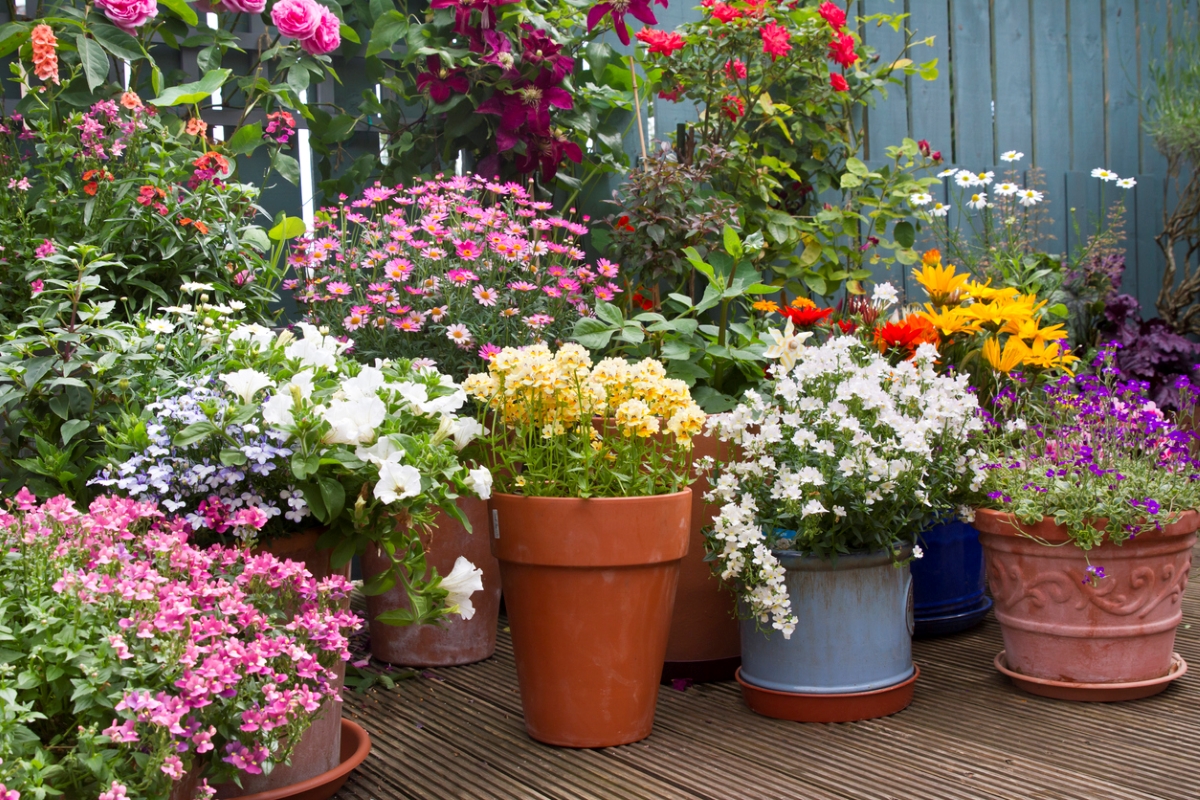We may earn revenue from the products available on this page and participate in affiliate programs. Learn More ›
Container gardening is the way to go if you yearn for a garden but don’t have the space. Whether you want to grow blooms and herbs on your balcony or turn your tiny concrete backyard into a cornucopia of fresh veggies, containers can make it possible.
But before you head to the garden center to grab some planters, you need to know what should go in them—and it’s not garden soil. Filling your containers with bagged soil or dirt from your garden is a recipe for unhappy, unhealthy plants and spoiled green dreams.
Ahead, learn why garden soil is a no-no for container gardening and what to use instead so your plants can have a home where they flourish.
Compaction and Poor Drainage
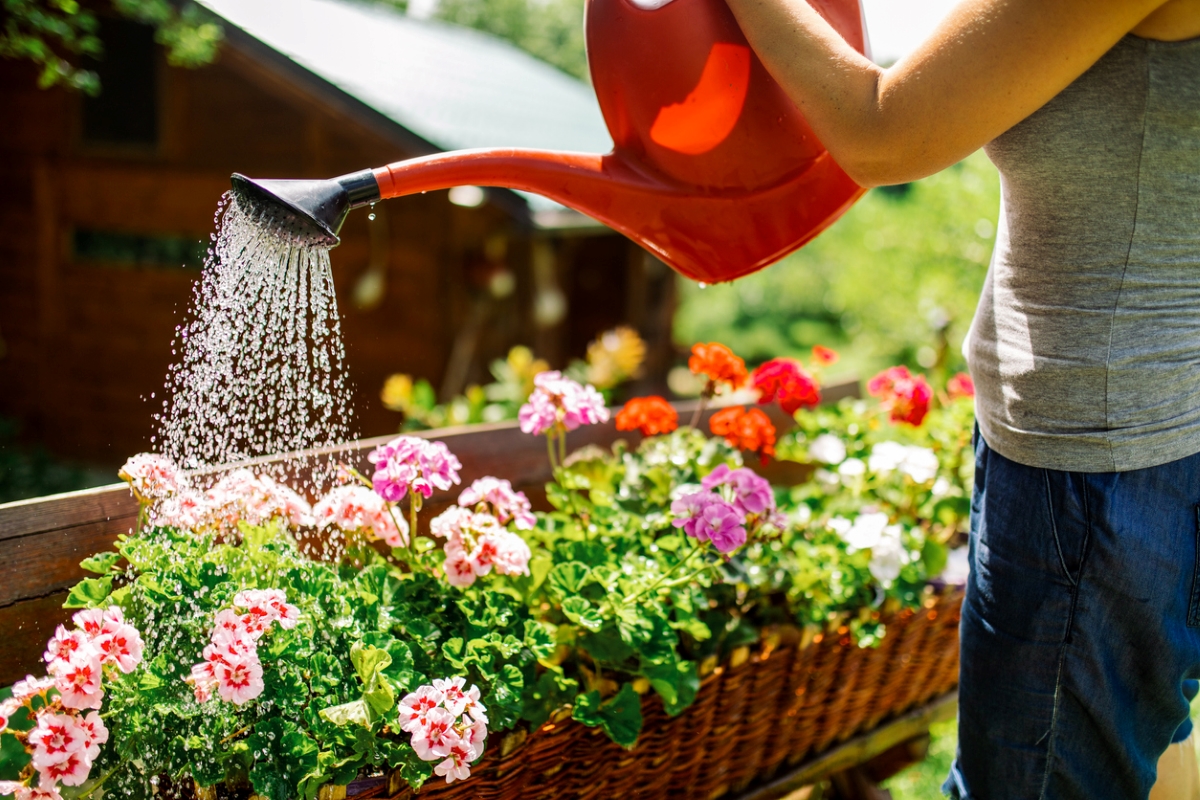
Soil isn’t just one medium—it’s a combination of several things, including silt, clay, sand, organic matter, and air. The space between soil particles allows air and water to flow freely around a plant’s roots, enabling the plant to grow freely and take up the water and nutrients it needs. The soil structure of an earth garden can be naturally established through soil-dwelling organisms and continuous growth and expansion of roots with unlimited space. But that natural process can’t happen in the limited space of a container. As a result, garden soil in containers becomes compacted, leading to poor drainage and waterlogging. This can cause root rot and plant death.
RELATED: 6 Pro Tips for Successful Container Gardening
Soil Contamination
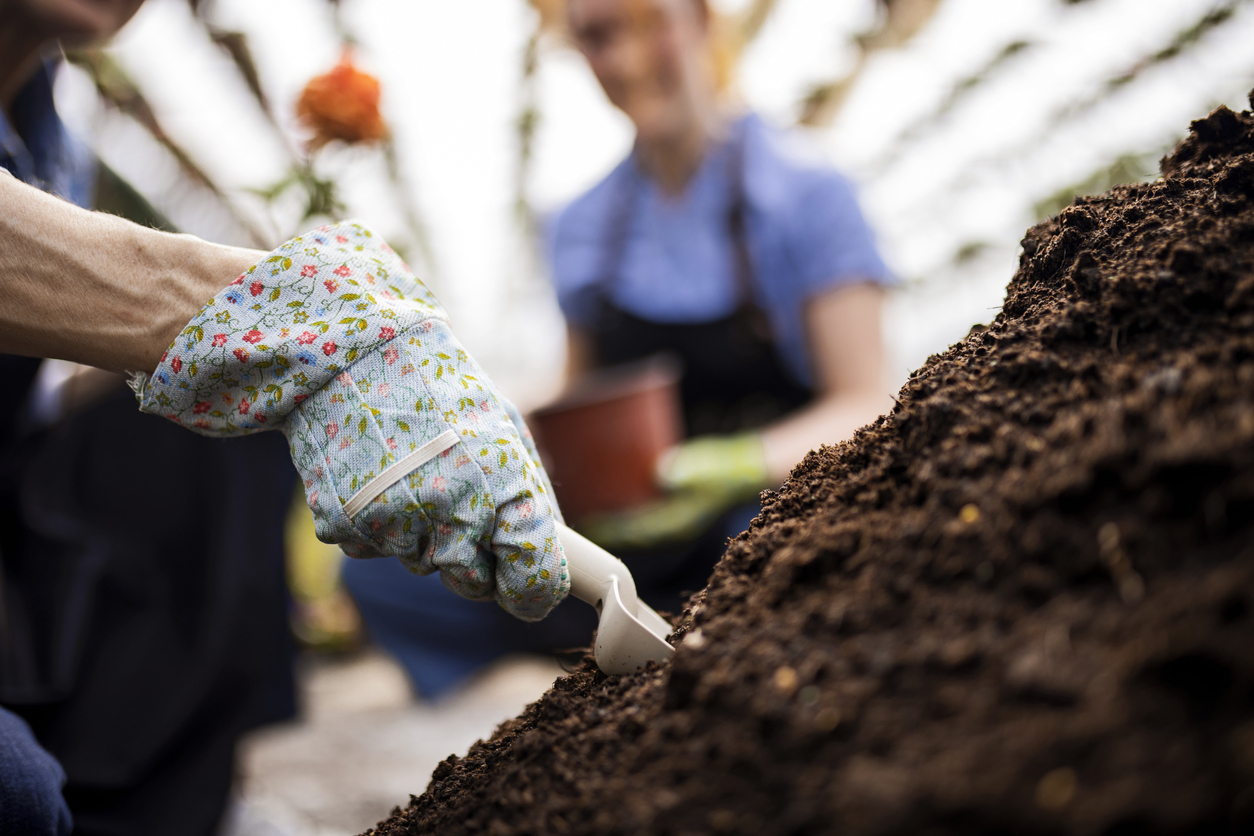
Soil taken from the ground and bagged topsoil purchased from garden centers can contain an array of microorganisms, pests, diseases, and weed seeds. While an in-ground garden may be able to contend with these issues, plants in the isolated environment of a container likely won’t have a chance. Additionally, topsoil sold at garden centers isn’t necessarily good-quality plant substrate, since you don’t know where the soil came from. Maybe it’s from a former agricultural field that is full of herbicides and pesticides, or maybe it’s nutrient poor from years of overuse. Either way, it will very likely contain seeds from undesirable plants.
RELATED: The Best Soil Test Kits According to Our Tests
Nutrient Imbalance and Deficiency
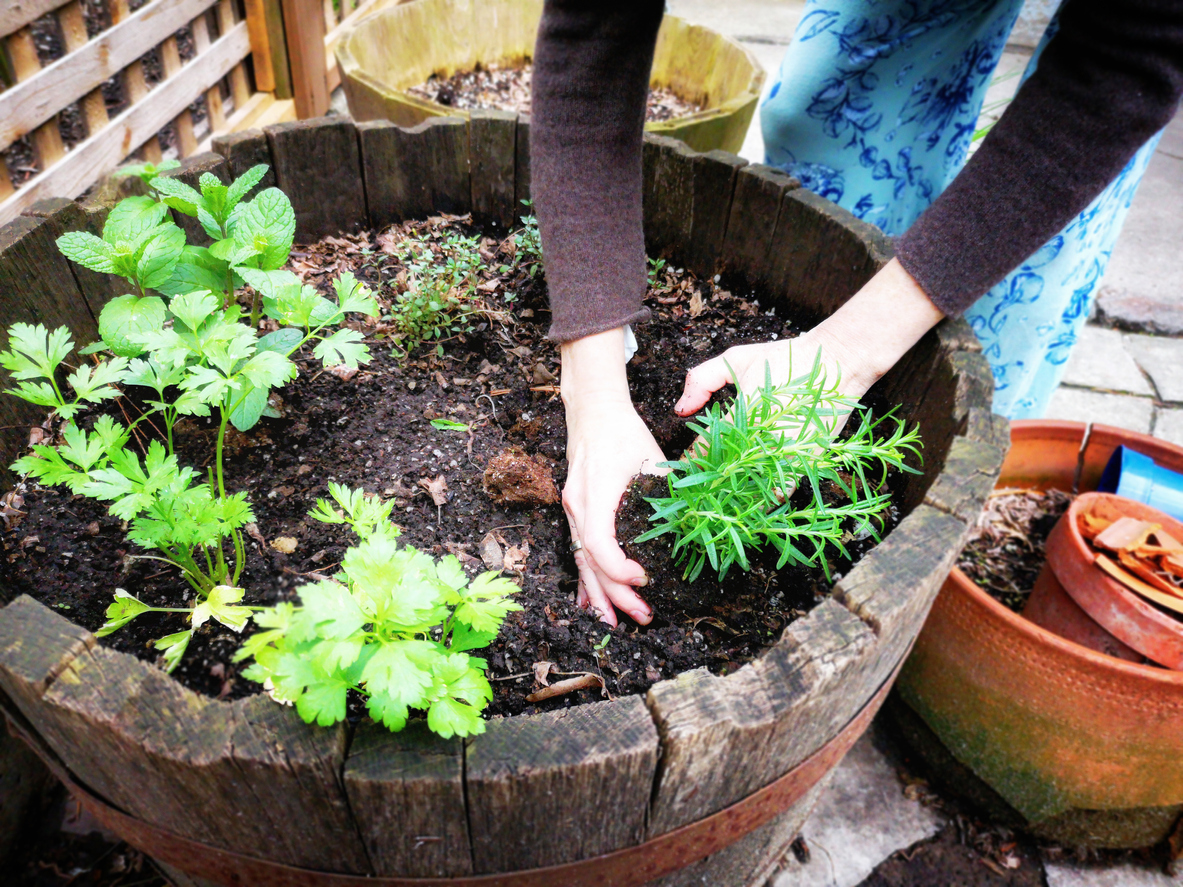
While soil is the natural substrate for in-ground plants, container plants have specific needs that regular garden soil can’t fulfill. Unlike in-ground plants, container plants have limited access to nutrient sources, so garden soil likely won’t contain the nutrition they need to thrive or the appropriate ratio of the big three gardening nutrients: nitrogen, phosphorus, and potassium. Additionally, container plants require frequent watering, which can further leach nutrients over time.
RELATED: Know the Types of Soil
Potting Mix—the Container Garden’s Best Friend

Potting mix, rather than garden soil, is what container plants need. Potting mix (which usually doesn’t contain any soil at all) is a substrate that is specifically formulated for plants grown in containers. Potting mix and garden soil differ in several important ways, including composition, drainage properties, nutrition, and consistency.
Good-quality potting mix has a structure that absorbs water while allowing air and water to circulate around a plant’s roots. Potting mixes usually contain a combination of:
- Sphagnum or sedge peat: Partially decomposed moss is the main ingredient of many potting mixes. Peat moss is lightweight and wicks water well without becoming waterlogged.
- Coco peat, or coir: This recycled coconut husk additive is an alternative to sphagnum peat moss. It holds more water than peat moss and adds aeration and water retention to the mix.
- Vermiculite: Vermiculite is a soil amendment made from mica rock. Due to its expansion during processing, it has an incredible ability to hold water and air.
- Perlite: This is the white, popcorn-like additive that gives potting mix its distinctive look. Perlite is made from volcanic rock that’s heated and expanded like vermiculite. Perlite holds water and provides aeration to the soil, keeping it light and fluffy.
- Limestone: This aggregate is a source of calcium added to container mixes to balance the acidity of peat moss and create a balanced pH for optimal plant growth.
- Bark or sawdust: Some mixes contain wood particles, which add texture and organic matter to the mix. Cheaper potting mixes often contain more bark and sawdust than high-quality ones.
- Hydrogels: These small water-absorbing polymers are added to some potting mixes to increase water retention. While these may be helpful for traditional planters in dry and sunny spots, they can make the soil too wet in self-watering pots.
- Fertilizer: Some potting mixes contain slow-release fertilizer, which is usually synthetically based.
Getting Your Containers Ready for Planting
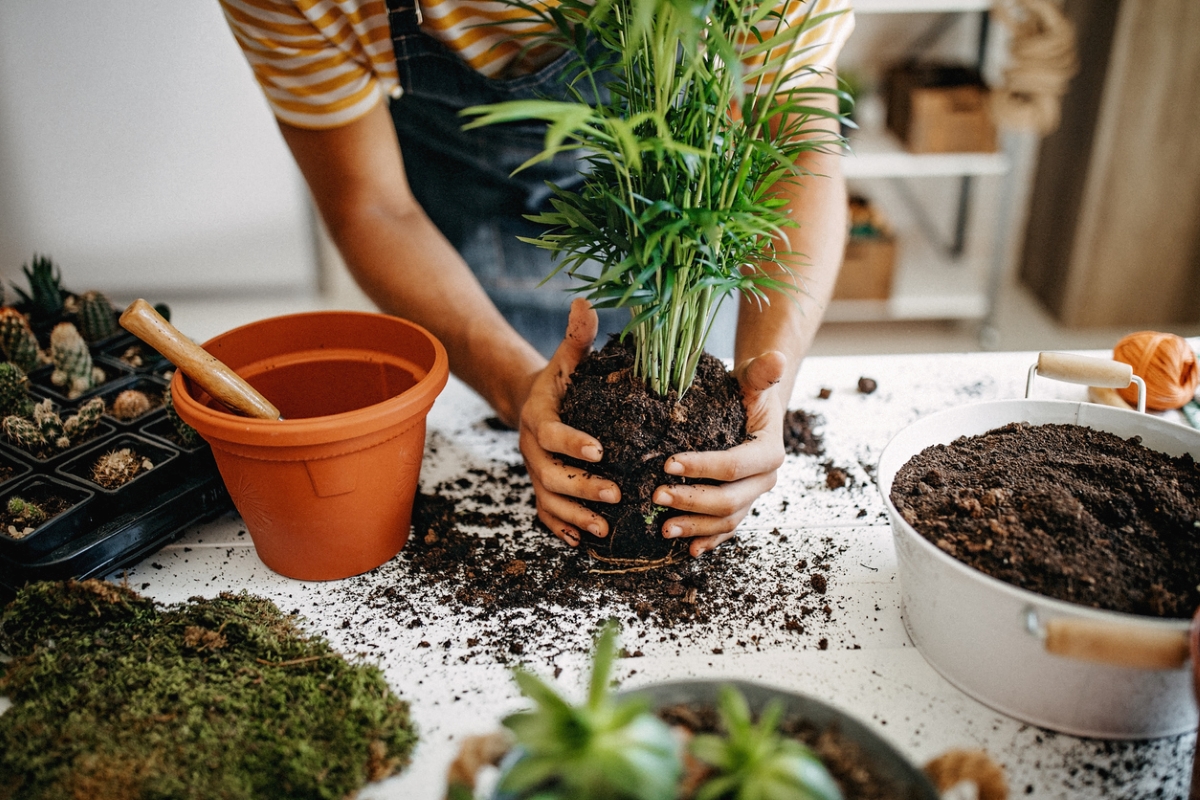
If you want to use containers to showcase colorful annuals for the growing season, all you need to do to get started is buy a good-quality potting mix (or, if you’re feeling handy, make your own), fill your containers, and plant your flowers. Other than regular watering and periodic fertilizing, you probably won’t need to do much else.
But if you want to grow vegetables or perennial plants, you’ll need to supplement the container soil according to your plants’ needs. A simple recipe for a nutrient-rich potting mix for vegetables is 1 part mature, high-quality compost, and 1 part potting mix. As your plants establish and grow, you will need to feed them with additional fertilizer according to the plants’ needs.
So keep your garden soil in the ground and your potting mix in your pots. Your container garden will thank you!
